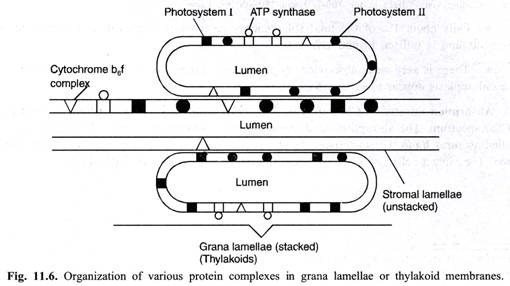ADVERTISEMENTS:
In this article we will discuss about the common parts of callistophyton plants.
Stem:
T.S. of Callistophyton stem shows a central angular parenchymatous pith surrounded by eustele. The stele is composed of a ring of 5 to 13 axial bundles (sympodia) forming leaf traces in 2/5 arrangement. Both mesarch and exarch primary bundles are reported, which are surrounded by thick zone of secondary xylem, made up of tracheids and biseriate rays.
ADVERTISEMENTS:
The cortex is divided into two zones: an inner parenchymatous zone, and an outer zone made up of longitudinally-oriented fibres interspersed with parenchyma. Some secretory cavities are present in the cortex. The periderm is formed specially in older stems.
Roots:
Callistophyton plants bear many adventitious roots attached to the nodes in the axils of buds or branches. Roots are diarch — they contain abundant secondary tissues including periderm, specially in older plants.
Leaves:
ADVERTISEMENTS:
Medullopteris (Fig. 1.7) leaves (up to 30 cm long) are helically arranged on Callistophyton stem or branch. Fronds are bi- to quadripinnately compound with prominent secretory cavities. The pinnules are deeply lobed with constricted base.
Pinnules adjacent to the tip of the frond are small with blunt tip and wavy margin, while those of more proximal, pinnules are large and lobed. Multicellular hairs are present on the abaxial side of the leaves.
Pollen Organs:
Two pollen organs, namely Idanothekion and Callandrium, have been reported in the family. Pollen organs are synangiate and borne on the abaxial surface of the unmodified pinnules. The synangia of Idanothekion glandulosum are formed by a ring of six to nine partly fused exannulate sporangia.
Vascular tissues are present in the outer layer of each sporangium. The upper Pennsylvanian Callandrium callistophytoides are morphologically similar to Idanothekion, except the absence of vascular tissues in the sporangial wall.
Dispersed Pollen:
The dispersed pollen grains of this family are called Vesicaspora. Initially pollen grains are formed as tetrahedral or isobilateral tetrads. Pollen grains are monosulcate, bilateral with one air sac (monosaccus).
Seeds:
ADVERTISEMENTS:
Callospermarion (Fig. 1.8) is the name applied to the seed of Callistophyton. Seeds are platyspermic and bilaterally symmetrical, borne on the lower surface of laminar pinnules. The integument is three-layered: outer fleshy (sarcotesta), middle stony (sclerotesta) and inner thin (endotesta). Two prominent vascular strands are present in the wings of the integument and a small pad of tracheids is present at the base of the nucellus.
The integument is free from the nucellus except at the base and the distal end is modified to form a flask-shaped pollen chamber. The ovules were able to trap pollen grains by the production of resinous pollination droplets, extended from the micropylar orifis. This pollination drop mechanism of Callistophytaceae suggests its affinity with Cordaitales and modern Conifers.


